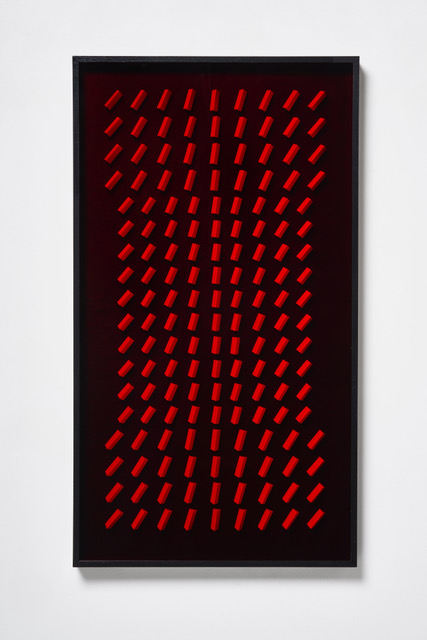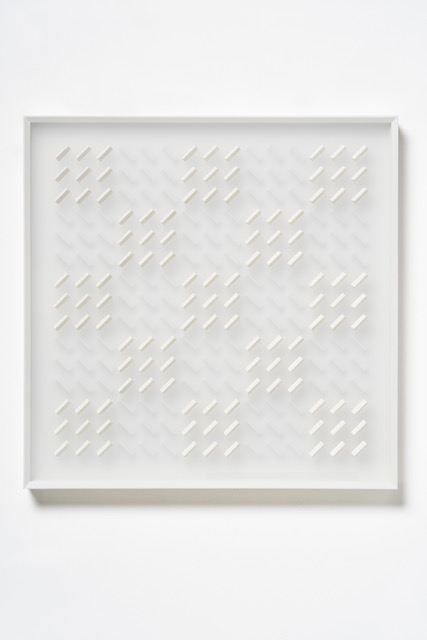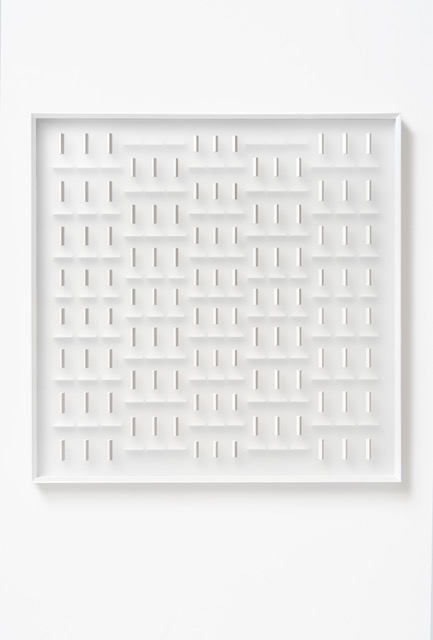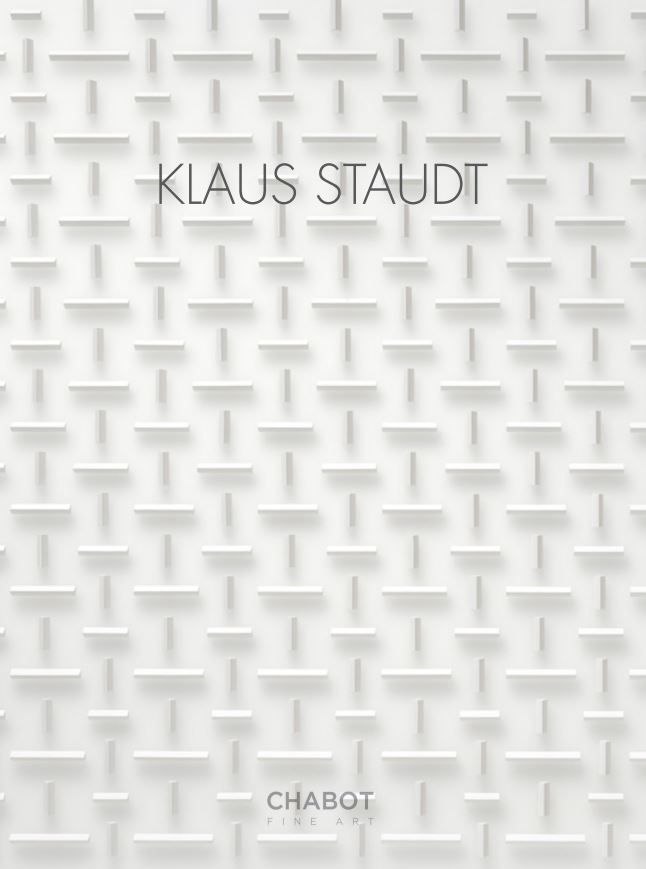Klaus Staudt, born in 1932 in Otterndorf, is a German painter. He became known with his series of geometric reliefs. He lives and works in Frankfurt am Main.
After a guest study in 1957 with Ernst Geitlinger at the Academy of Fine Arts in Munich, he began a regular study from 1959. In 1963 he became a member of the avant-garde international artist group Neue Tendenzen. From 1974 to 1994 he worked as a professor at the Academy of Design in Offenbach am Main. At the same time he was responsible for the conception and the construction of the collection of concrete art of the district of Cuxhaven and worked on their presentation and expansion. In 2010 he was admitted to the Foundation for Concrete Art and Design Ingolstadt. Klaus Staudt is a member of the Deutscher Künstlerbund. Klaus Staudt is one of the leading exponents of constructive-concrete art in Germany.
In particular, the aesthetics of uniform grid structures is groundbreaking for his work. The basic compositional component is the square, which he varies, modulates and paraphrases over decades. From the 1980s Staudt also uses the vertical as an alternative module, which establishes a parallel group of works. Structures, grids and the color white also find their way into his compositions. In addition, Staudt uses wide-ranging materials such as wood and translucent Plexiglas.
With withdrawn means, the artist creates light and shadow, space and movement as well as a transparent spatiality that varies according to the observer’s point of view. The viewer thus becomes the “co-author” who plays an active role in the interactive image viewing process.
Especially in Staudt’s early work, the occupation with the representation of visibly immaterial – for example, the visualization of light and shadow – is characteristic. Above all, the color white, but also the use of delicate colors from the 1980s play an essential role in addressing the interaction of color, light reflection and surface.
From the mid-1960s Staudt negotiated compositions in two levels. By overlaying and superimposing the image elements and closing the image space with a frequently opaque Plexiglas plate, Staudt generates both blurring and additional dynamisation of image spaces. Disarming and disguising solve the system logic. Staudt also developed fully plastic objects and architectures, which he executed in the 1970s in the form of expansive light steles and walls of light. The large-scale sculptures and installations of this period tie in with the tension between system logic in square forms, concealment tactics and the subjective view of the observer.
In his current creative phase, Staudt consistently turns to objects with expansive components and explores the impression of seemingly unfixed floating.
Works

Freudige überraschung
Year: 2019 Material: wood, acryl, plexiglas Dimensions: 100 x 56 x 5,5 cm

Light & shadows
Year: 2019 Material: wood, acryl, plexiglas Dimensions: 70 x 70 x 7 cm

In der Mitte dazwischen
Year: 2018 Material: Wood, acryl, plexiglas Dimensions: 85 x 85 x 6,8 cm
Crescendo 003
70x70x6,5 cm
Holz, Plexiglas, Acrylfarbe
